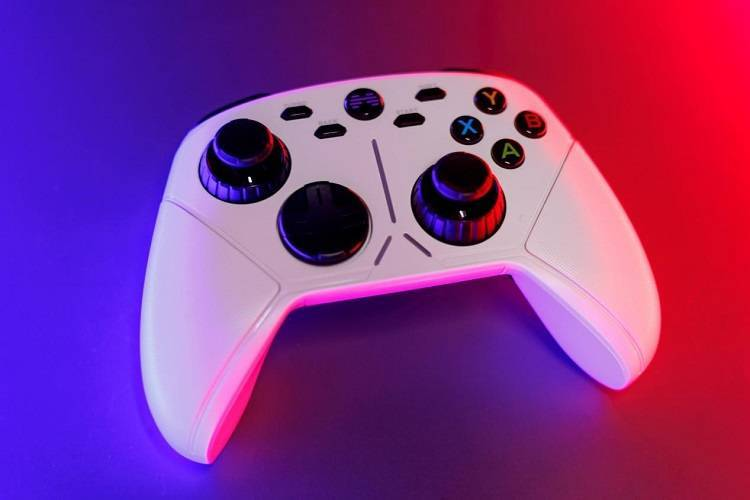I. Appearance inspection
1. Main material and workmanship:
(1) Check whether the surface of the controller is smooth, without burrs, scratches, bubbles, paint peeling or color difference, especially the buttons, joysticks, grips and other parts that are often touched
(2) Check whether the seams of the shell are tight. There should be no obvious looseness or abnormal sound when the handle is gently squeezed
2. Buttons and joysticks:
(1) Buttons: Press all buttons to feel whether the feedback is crisp and whether the rebound is sensitive. There should be no jamming or sticking when the button is pressed
(2) Joystick: Push the joystick left and right, up and down, and check whether the movement is smooth. After releasing the hand, the joystick should automatically return to the original position without offset or jamming. At the same time, observe whether the joystick cap is firm and whether there is any risk of wear or falling off.
3. Interfaces and cables (wired controllers):
(1) Check whether the inside of the USB interface (or other charging/data interface) is clean and free of dust, foreign matter or oxidation of metal contacts
(2) The cable of the wired controller should not be tangled or damaged, and the plug should be properly tight when plugging and unplugging.
4. Indicator light: Some controllers will have an indicator light when they are turned on or connected to a device. Check whether the indicator light is normal and whether the color and flashing mode are consistent with the description in the manual (such as connection status, charging status, etc.)
II. Functional test:
1. Power on and connection:
(1) The wireless controller needs to be powered on after the battery is installed (or charged), and connected to the host, computer, mobile phone and other devices via Bluetooth or receiver to check whether the connection is smooth and whether there are frequent disconnections.
(2) The wired controller is directly inserted into the device interface to confirm whether the device can recognize the controller and whether the driver is automatically installed ( Some controllers may require manual driver installation)
2. Button and joystick functions:
(1) Open the game or device’s controller test tool, press all buttons, and check whether the button feedback on the screen corresponds accurately, and there is no button failure or false touch
(2) Move the joystick, observe whether the cursor or game character movement on the screen is synchronized with the joystick operation, and whether the sensitivity and accuracy of the joystick are normal
3. Vibration function:
Many controllers support vibration feedback (such as dual motor vibration, trigger vibration, etc.). Trigger vibration scenes (such as impact, explosion) in the test interface or game, and feel whether the vibration is uniform and layered, and whether the feedback of the left and right vibration motors is consistent.
4. Battery life test (wireless controller):
If conditions permit, you can test the battery life of the controller (use it continuously after it is fully charged until the battery is exhausted) to confirm whether it is consistent with the official battery life. At the same time, check whether the charging indicator light is normal and the charging speed is reasonable during charging.
Post time: Jun-25-2025






